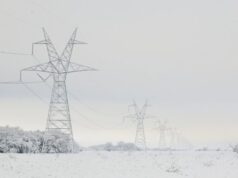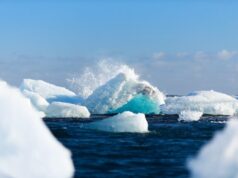Amid increasing concern about the effects of plastic pollution on marine ecosystems, a new study led by Portland State University found that North America is lagging behind other continents when it comes to understanding the potential risks that microplastics and associated pollutants pose to both fisheries and the humans that consume the seafood.
Researchers from Portland State University (PSU), Oregon State University (OSU), and the University of North Carolina-Wilmington (UNC-W) reviewed microplastics studies on commercially-important fishery species published before March 1, 2019, finding that most of the existing literature comes from Europe, Asia, and South America.
“Because seafood — both aquacultured and wild-caught — are so important to the human diet and culture, it’s really important to investigate microplastics specifically on our continent and not relying on data from another part of the world because environmental conditions can be very different,” said Britta Baechler, a Ph.D. student in PSU’s Earth, Environment and Society program.
The research priorities identified for North America include:
- Determining microplastic exposure and effects in a more representative pool of commercially harvested finfish and shellfish species. In the U.S., microplastic effects have been examined in only three of the top 10 commercial finfish species, with no studies on Alaskan pollock, the species with the highest U.S. landings.
- Addressing the large knowledge gaps in population- and community-level effects. Since microplastics may affect the behavior, larval development, growth, reproduction and physiological function in a number of commercially important North American finfish and shellfish species, knowing the effects of microplastics on populations or food webs is critical. Such research will help fisheries and aquaculture managers in their ability to predict potential population-level issues associated with increased exposure to microplastics.
- Investigating microplastics as one of multiple environmental stressors. In light of rising sea surface temperatures and acidifying oceans, it’s important to know how microplastics might synergistically work with these other stressors to further impact marine species.
“We think of North America as a hotspot for scientific research, yet in terms of understanding microplastics — both contamination in our commercial fishery species and understanding effects, we’re lagging far behind,” said Elise Granek, a professor of environmental science and management in PSU’s College of Liberal Arts and Sciences.
Find your dream job in the space industry. Check our Space Job Board »
Provided by: Portland State University
More Information: Britta R. Baechler, Cheyenne D. Stienbarger, Dorothy A. Horn, Jincy Joseph, Alison R. Taylor, Elise F. Granek, Susanne M. Brander. Microplastic occurrence and effects in commercially harvested North American finfish and shellfish: Current knowledge and future directions. Limnology and Oceanography Letters (2019). DOI: 10.1002/lol2.10122
Image Credit: CCO Public Domain











